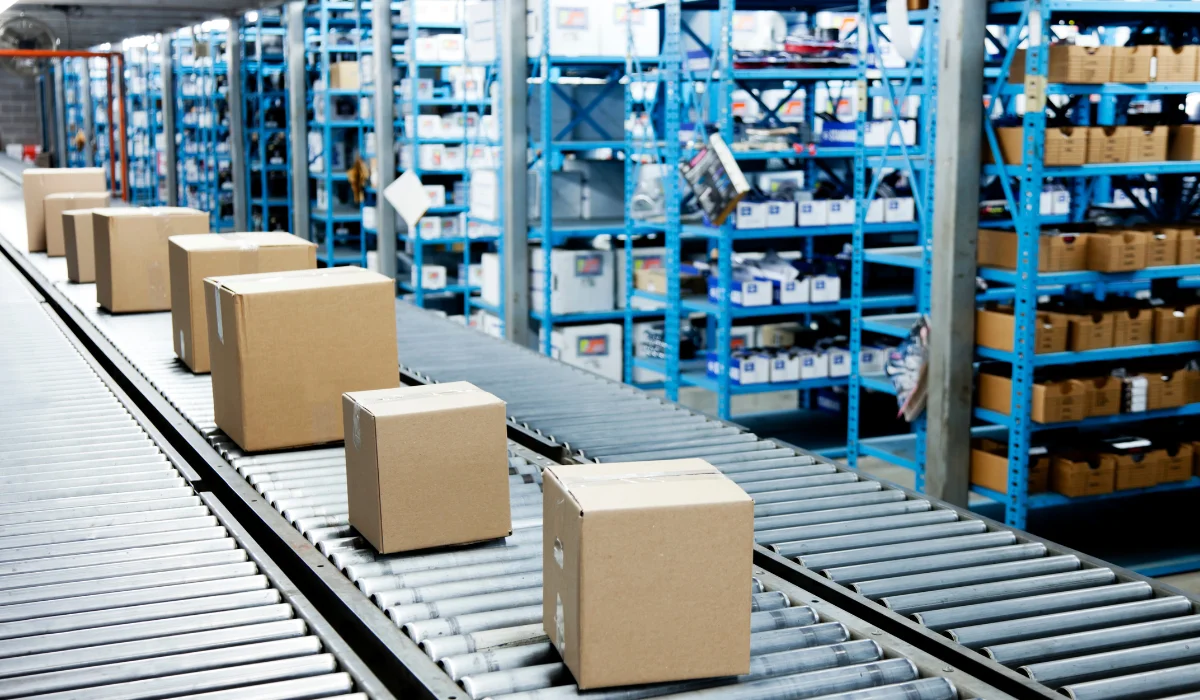What exactly should we measure to reduce cost without compromising output or quality?
The answer isn’t in tracking everything, it’s in tracking the right things. This blog dives into the eight most important manufacturing KPIs that directly impact cost efficiency. We’ll explore why each one matters, how it connects to your bottom line, and what to do with the data once you have it. Let’s break down the metrics that help you spot leaks, fix inefficiencies, and make smarter operational decisions.
Metrics That Matter: Manufacturing KPIs You Should be Tracking

1. Overall Equipment Effectiveness (OEE)
OEE measures how effectively your manufacturing equipment is working. Essentially, it assesses the availability, performance, and quality of the equipment. It indicates how efficiently each machine is being used compared to its maximum potential.
For example, if a packaging line is frequently down for changeovers or maintenance, your OEE score will reflect that. A low overall equipment efficiency means you are paying for idle machines and wasted time.
What else can you find out by tracking OEE?
- Identify underperforming equipment
- Optimize maintenance schedules
- Avoid unplanned downtime
Why it matters: Unused capacity is a hidden cost. Improving OEE means producing more with the same assets, which spreads fixed costs over a higher output.
2. Cost per Unit (CPU)
This is your cost blueprint for each item produced, covering the costs of raw materials, labor, and energy involved in producing each unit.
Let’s say your factory produces 10,000 parts in a month, and the total production cost is $100,000. Your CPU is $10. If inefficiencies increase your CPU to $11, that’s a $10,000 leakage from your bottom line.
Why it matters: CPU gives you the real hint into your profitability. Let’s say your selling price is below the CPU, then you need to optimize or rethink pricing.
Also Read: How to Build a Cost Breakdown Structure for Budget Accuracy
3. Production Volume
One of the first and most basic metrics for measuring manufacturing efficiency is production volume. It helps you assess the total output during a specific period. By analyzing production volume, manufacturers like you can understand their efficiency in converting raw materials into finished goods.
A higher production volume often results in lower costs per unit, allowing economies of scale to benefit you. However, it’s crucial to balance volume with quality and cost to prevent overproduction, which can lead to waste and excess inventory.
4. Production Downtime

A single minute of production halt means lost revenue. Tracking downtime, whether it’s planned or unplanned, helps you pinpoint inefficiencies in your operations. Identifying patterns in machine breakdowns, supply chain disruptions, or operator delays allows for more effective scheduling, maintenance, and resource allocation.
Understanding the causes behind downtime helps you optimize cost. Proactive measures, such as scheduled maintenance or investing in more reliable machinery, can dramatically reduce downtime and improve production flow.
5. Production Costs
Production cost is an important metric to track in manufacturing because it includes every single cost, from direct cost like raw materials cost to indirect that includes labor cost. Tracking these costs ensures that you aren’t overspending at any point in the production cycle.
Breaking down production costs into categories such as material, labor, energy consumption, and waste helps identify areas where you can save, whether through negotiating better supplier contracts or reducing energy consumption in machinery.
Also Read: The Hidden Costs in Manufacturing: How to Identify and Reduce Them
6. Overall Operations Effectiveness (OOE)
Similar to OEE metrics, OOE looks at overall operations rather than just the equipment. While OEE focuses on machine-specific performance, OOE includes factors like workforce efficiency, scheduling optimization, and supply chain fluidity. Tracking OOE helps you measure how effectively the entire operation, from raw material acquisition to the final product delivery, is performing. By improving OOE, you can ensure a smoother, more cost-effective production process.
7. Total Effective Equipment Performance (TEEP)
![]()
TEEP builds on OEE, extending its scope to measure how much production time is being utilized versus the potential production time available. It evaluates the overall productivity of all machines across 24 hours, including off-shifts and non-operating hours.
This metric helps manufacturers like you identify whether they are utilizing all available hours for productive work, or if there is an opportunity to increase shifts, reduce unnecessary downtime, or operate at night to boost overall performance.
8. Capacity Utilization
What is your total production capacity? How much of it are you using? Capacity utilization gives you that number. If a factory is operating at full capacity, it means production volume is optimized. However, if it’s running below capacity, it could indicate underutilization of resources, inefficiency, or even a mismatch between production capabilities and market demand.
By improving capacity utilization, manufacturers can lower per-unit costs and reduce the need for excessive capital investment in new machinery or expansion.
9. Defect Density
Here, you count how many defects are in per unit of production. It helps in monitoring the quality of their products and identifying areas where production processes are failing. If the defect density is high that means the cost of rework, waste, and customer returns will also be high. Tracking defect density ensures that quality control measures are effective and that production lines are meeting customer expectations without the costly repercussions of poor-quality products.
10. Labor Utilization Rate
The labor utilization rate calculates the percentage of available labor that is actively engaged in productive tasks. A higher labor utilization rate indicates that a manufacturer is using its workforce effectively, minimizing idle time. By measuring this rate, you can optimize workforce scheduling, identify skill gaps, and reduce the need for overtime costs.
Also Read: Manufacturing Cost Analysis: What You’re Doing Wrong (and How to Fix It)
How Cost Optimization Software Helps Track These Manufacturing KPIs

Tracking and optimizing the quality KPIs mentioned above in manufacturing can seem daunting, especially for large operations with multiple production lines, plants, or shifts. This is where cost optimization software plays a transformative role.
Advanced cost optimization platforms such as Cost It Right are designed to centralize and automate the collection, tracking, and analysis of key performance indicators across various aspects of manufacturing. Here’s how Cost It Right help in tracking key manufacturing KPIs without a lot of work:
- Automated Data Collection: The software pulls real-time data directly from machines, sensors, and other integrated systems, ensuring accuracy and reducing manual effort. For example, it can track production volume and downtime in real time, providing continuous insight into operational performance.
- Centralized Dashboards: With a unified dashboard, manufacturers can see OEE, TEEP, capacity utilization, and defect density all in one place. Customization options allow users to prioritize the metrics that matter most for cost reduction strategies.
- Root Cause Analysis: When KPIs like defect density or downtime are high, optimization software can perform root cause analysis, pinpointing whether the issue lies with equipment, labor, materials, or another area. This reduces the guesswork in decision-making.
- Scenario Planning: The software allows manufacturers to model different scenarios and assess the cost impact of operational changes, such as adding shifts, upgrading machinery, or adjusting production schedules.
In conclusion, the right cost optimization software turns these metrics into actionable insights, enabling smarter, data-driven decisions that improve profitability, efficiency, and sustainability in manufacturing.
Final Thoughts
Manufacturing is too complex to rely on instincts alone. With rising competition and shrinking
margins, data-backed decision-making is not optional; it’s essential. By focusing on these eight metrics, manufacturers can move from reactive firefighting to proactive cost leadership.
Ready to see where your money is leaking? Start by tracking what truly matters. And if you want a clearer view, Cost It Right can be your partner in making every metric count.





